Photo by Luke Southern on Unsplash
Horror is one of my favorite genres. I crave it all times of the year – not just during October, when Halloween-themed movies and decorations abound.
In my opinion, horror is eternal. It is a mirror into our psyches that will continue to exist for as long as humanity has something it’s vulnerable to. It’s the purest expression of what drives us and what gives us nightmares.
I don’t know the exact percentage (and I’m too lazy to do the math), but my Steam library is largely made up of horror games as a result of my fascination with them. Since the 2010’s recently concluded, I think it would be fun to share a few of my favorite games from the past decade.
Stipulations
It’s important to lay down criteria for the games on this list and how I chose them. There’s also at least one disclaimer I should probably give, so let’s get started.
As the title of this post implies, I only chose games that were released in the years ranging from 2010 to 2020. This does not mean that I chose a game from each of those years, because I honestly didn’t play a horror game from all of them. I think I’ve actually got quite a few from 2017 on here.
Another thing to note is that I didn’t complete all the games on this list. I did beat most of them, but there are a small handful that either can’t really be “beaten” or I couldn’t finish for various reasons. If that’s the case for a game, I’ll mention that and explain why I couldn’t finish it in that specific game’s section.
These are games that I define as the most enjoyable for me personally. They are not necessarily the “best” in any sense, whether it’s critical acclaim, popularity, or player ratings. I simply perused my library on Steam and selected horror games I liked playing the most.
My Favorite Horror Games of the Decade
Soma
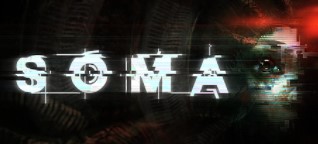
Frictional Games is best known for their famous Amnesia series, but my all-time favorite game of theirs was Soma, released in 2015. I’ve seen plenty of critics who complained that Soma wasn’t “scary enough,” and that it lacked the powerful horror elements used in Amnesia: the Dark Descent.
My opinion is that those people just aren’t thinking deeply enough. The horror of Soma may not necessarily be in its monsters – it’s in the setting and the concepts the game embodies. It is a game about existential horror, something that is not everyone’s cup of tea.
And, true to its themes, Soma put me through a turbulent existential crisis. If you don’t know anything about it, Soma follows the story of a man named Simon Jarrett who wakes up in an underwater facility on the ocean floor decades into the future. He has no memory of how he got there, the facility is largely abandoned, and there are monsters everywhere.
This game dares to ask questions which, to me, are terrifying. It forces you to look at your own values and how you define what makes a human, a human. Are people only flesh and blood? Would an advanced AI, capable of thinking, feeling, and solving problems, be worthy of personhood?
Even if it doesn’t scare you, Soma will give anyone prone to navel-gazing an existential crisis of their own. There’s an excellent video essay about it on Youtube if you’re not averse to encountering major spoilers.
Amnesia: Rebirth
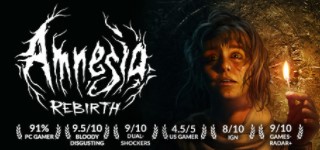
Forgive me for throwing another Frictional Games item on this list. Amnesia: Rebirth just barely squeaks by, given that it was released at the end of 2020.
At the time of writing this post, I’m not 100% done with it, but I’m close to the end. The reason I chose to include it is that it has done something for me that single-player horror games haven’t done for awhile: it’s kept me excited for more. Unlike with Betrayer, I don’t find myself dreading each session and I don’t have to schedule specific time slots to play it. I look forward to the time I spend in the game.
There are many reasons for this. First, the game is stunning. I’m sure someone out there would say the graphics really aren’t that good compared to Cyberpunk 2077 or something, but I feel as if Amnesia: Rebirth is beautiful. I love looking around at the alien scenery and exploring as much of it as I can.
Second, the characters are much more poignant and relatable than Amnesia: the Dark Descent. I legitimately feel for Tasi and there’s a sense of urgency lent to the game because of her child. She’s far from the bland protagonist that I feel The Dark Descent had.
The sound design is also a work of art in the game. Not only is the music itself good, but the ambient noises are really well-done. There have already been countless points in the game where I’ve been frozen in terror, the hair on the back of my neck standing up because I thought I heard something right behind me.
Even if the ending turns out to be disappointing for me, I can’t deny that I had a blast experiencing it thus far. That has value.
Outlast
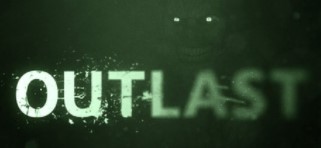
I think what made Outlast the viral sensation that it became was its ability to take the best elements from Amnesia: the Dark Descent and transfer them to a modern era. It shares many things in common with the Amnesia franchise, including an almost walking simulator-type design, reliance on a lighting device that needs to regularly be refilled (a camera in Outlast vs lantern in Amnesia), monstrous enemies that can kill you, and scattered documents to provide you the backstory.
Outlast is seriously a thrilling ride from start to finish. The difference between it and Amnesia is that it leans far more heavily into gore and body horror, though, so be prepared to deal with lots of blood.
I may not ever play this game again. It doesn’t lend itself well to replayability, nor does it raise profound themes that bear thinking about years later. However, its relatively short romp through the Mount Massive Asylum is worth a go for any horror fan at least once.
The Painscreek Killings
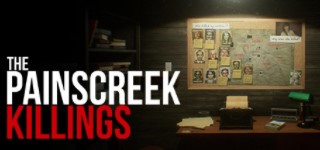
I didn’t actually beat The Painscreek Killings at the time I played it due to technological limitations on my computer. But I was able to sample a few hours of it, and what I can remember is impressive.
It’s one of those games that flies under the radar for most. As an indie walking simulator-style horror game, it’s not at the tops of most people’s lists, which is a shame. Not only is this game one of the most visually beautiful I’ve seen produced by an indie developer in recent years, but its atmosphere is really something else.
You’re investigating the murder of a woman named Vivian. But as you look around, you find yourself wandering through a completely abandoned town filled with gorgeous houses. Where is everyone? Every so often, as you search the town and wonder this to yourself, you’ll see something unnerving: a mannequin in the distance that appears to change positions, scorch marks where there shouldn’t be any, shadows that don’t make sense, dark hallways….
The slightly off-putting nature of everything got to me with this one. Although I didn’t complete it at the time, I strongly recommend giving it a try. I know I’m going to attempt it again now that I have a much better computer.
Song of Horror
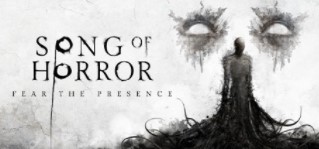
Song of Horror is an eerie episodic horror game with an interesting (and disturbing) mechanic: perma-death. Perma-death just means that the characters in the game can permanently die. No bringing them back, no getting set back at an earlier checkpoint – the character is just gone.
Because there’s a possibility your characters will die as you investigate creepy houses, storefronts, and the like to uncover the mystery of a seemingly cursed music box, there’s a whole cast of them to play. Each one has different stats and abilities that make them useful for various stages in the game.
Although perma-death is a frustrating and heavy consequence to face, I like the mechanic. The mechanic itself has old roots, but it still gives a fresh new face to horror games. I haven’t beaten this one yet, though, because of a game-breaking bug I experienced in the second chapter. One of the pieces I needed to progress wasn’t there, and I ended up giving up.
Nonetheless, I plan on re-installing Song of Horror and trying it again at a later point. This time, however, I might follow a guide, so I don’t end up going into areas I’m not supposed to too early and potentially breaking the game.
Alien: Isolation
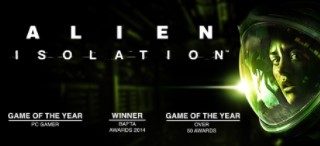
When it was released, Alien: Isolation made a huge splash in the horror game scene. This is because it was the first part of the Alien franchise in a long time to not be….uh, I’ll go with obviously low in quality.
Alien: Isolation takes you back to the franchise’s roots. Suspense is king in this game, and you never know when you’ll run into the xenomorph on the space station. Plus, you’re made to feel truly vulnerable, going for most of the game without having any weapons that stand even a tiny chance against the alien.
I’m not going to lie: this one frustrated me a lot. I almost gave up on it. The xenomorph is an extremely intelligent enemy to go up against, and unlike many other antagonists in horror games, you can’t just run past it every time. In fact, being speedy in Alien: Isolation can punish you.
But I managed to stick this one out, and I’m glad I did. It’s absolutely worth playing if you’re a fan of the Alien movies or if you just like horror in general.
Read Next: Alien: Isolation Review – My Unrefined Impressions
Conarium
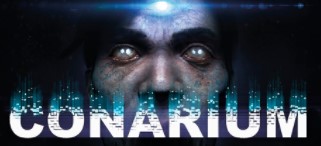
This is going to be a more controversial opinion of mine, but I think Conarium is one of the best Lovecraftian games to come out in recent memory. I’m not saying it’s an all-around great game, but I am saying that, out of all the horror games I’ve played in the past several years, it definitely understands Lovecraftian elements better than other games purporting to be Lovecraftian.
No grizzled, middle-aged, alcoholic private eye here. No abundance of tentacles. No forced, lackluster sanity element that just makes the screen get all fuzzy when your sanity is low.
Instead, Conarium puts you into the role of a scientist in the arctic who wakes up to find their research station abandoned. As you search for clues about what happened, you discover increasingly disturbing hints of an ancient civilization existing on your site…and that civilization may not be entirely gone, even if it seems like the ruins are millions of years old.
It’s not the scariest experience out there, but in some ways, I find that refreshing. Instead of trying to get you with cheap jump scares and graphic monsters, Conarium tries to subtly build existential dread. And in the end, it’s not even necessarily horrifying – it’s almost…melancholy. There’s a certain romanticism inherent to the idea of escaping the confines of humanity to discover that reality is more than we ever imagined, and Conarium captures that sentiment more convincingly than I’ve seen any other games do to date.
White Noise 2
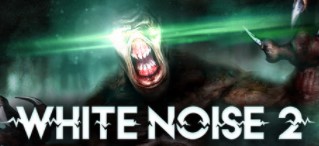
Nowadays, there’s an abundance of 4v1 horror games. Honestly, it’s getting to be kind of passe – there are tons to choose from, and most of them fall flat on their face.
But White Noise 2 was different for me. Why? Well, most of these asymmetrical games remove the fear from horror. When you’re playing with a group of people, that’s natural – it’s just scarier to be alone. However, WN2’s atmosphere is so well-done, it’s still scary to play, even with friends.
And when one of you is actually good at being the monster? It’s even more intense. Unfortunately, the online community around this game is mostly dead, so if you want to play it, you need to make sure you have around three or four other people to play with. Otherwise, you’re not likely to be able to find open parties online.
If you’re the only person in your friend group who plays, you might be able to squeeze into a lobby later at night or in the evenings on weekends. Those were, in my experience, the best times to play without a dedicated friend group along for the ride.
Friday the 13th

This is another asymmetrical multiplayer game. As you might have guessed from the title, one player is Jason Voorhees and the others are camp counselors trying to escape the camp before he can kill them all.
Unlike with White Noise 2, this one isn’t very scary. It’s extremely campy, and when you’ve got scantily clad counselors (both male and female) running around, making stupid faces while they troll whoever is Jason, it just loses its terror.
I forgive this one for not being scary. Perhaps I’m a bit biased towards it because there was a long period of time where I played it every night with friends and family, and it really grew on me.
Recently, it was subject to a lawsuit that prevented developers from making any updates or changes to the game. I’m not 100% sure, but I think they are now making updates again, so fingers crossed that they’re able to add new content eventually or, at the very least, continue to improve the game in other ways because it’s a wee bit buggy.
Enigmatis: The Ghosts of Maple Creek
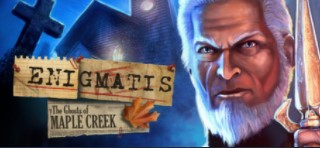
Point and click games aren’t usually my forte – it seems like they’re naturally less scary because they’re simply kind of…un-immersive?
So, I wouldn’t say Enigmatis was the kind of game that’s going to keep you up at night or blow you away with its story. Nonetheless, I had fun playing it and legitimately looked forward to each time I spent with it.
It has puzzles that are reasonably challenging, and I was surprised to find I even enjoyed the parts where you have to search for objects in a large and complex picture. It’s kind of a refreshing change of pace if the only horror games you ever play are far more sophisticated ones like Alien: Isolation.
Bonus: Murdered: Sole Suspect
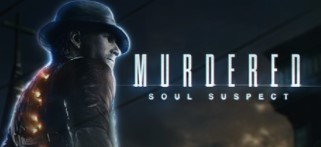
Where do I start with this one?
I didn’t actually finish Murdered: Sole Suspect, and it was for the dumbest reason. The reason I didn’t complete it is that I was super embarrassed when I heard other people making fun of the game, and I thought they would think lowly of me if I admitted I had enjoyed it.
Yes, it’s kind of cringey. It has a very late 2000’s feel to it with the overly edgy style of the main character, Ronan. It kind of feels like Evanescence the game or something.
You play as a police officer (detective? I can’t remember) who is attempting to solve his own murder. Along the way, you start to uncover disturbing clues leading you the identity of the Bell Killer, a serial killer who’s been terrorizing the town.
I can’t deny that the concept of playing as a ghost and possessing people is a fun mechanic – one that I had a great time using. It’s not exactly the scariest game out there, but its angsty, moody atmosphere is fun to traverse and the mythological approach to ghostly powers is intriguing.
Wrap Up
These are just my favorite horror games of the 2010’s that I’ve played so far. I’m still working on the goal of completing all the playable horror games in my Steam library, so I might encounter games I like even more than many I included on this list. I guess I’ll see.
What are some of your favorite horror games? Why do you like them? Let me know by leaving a comment below.
